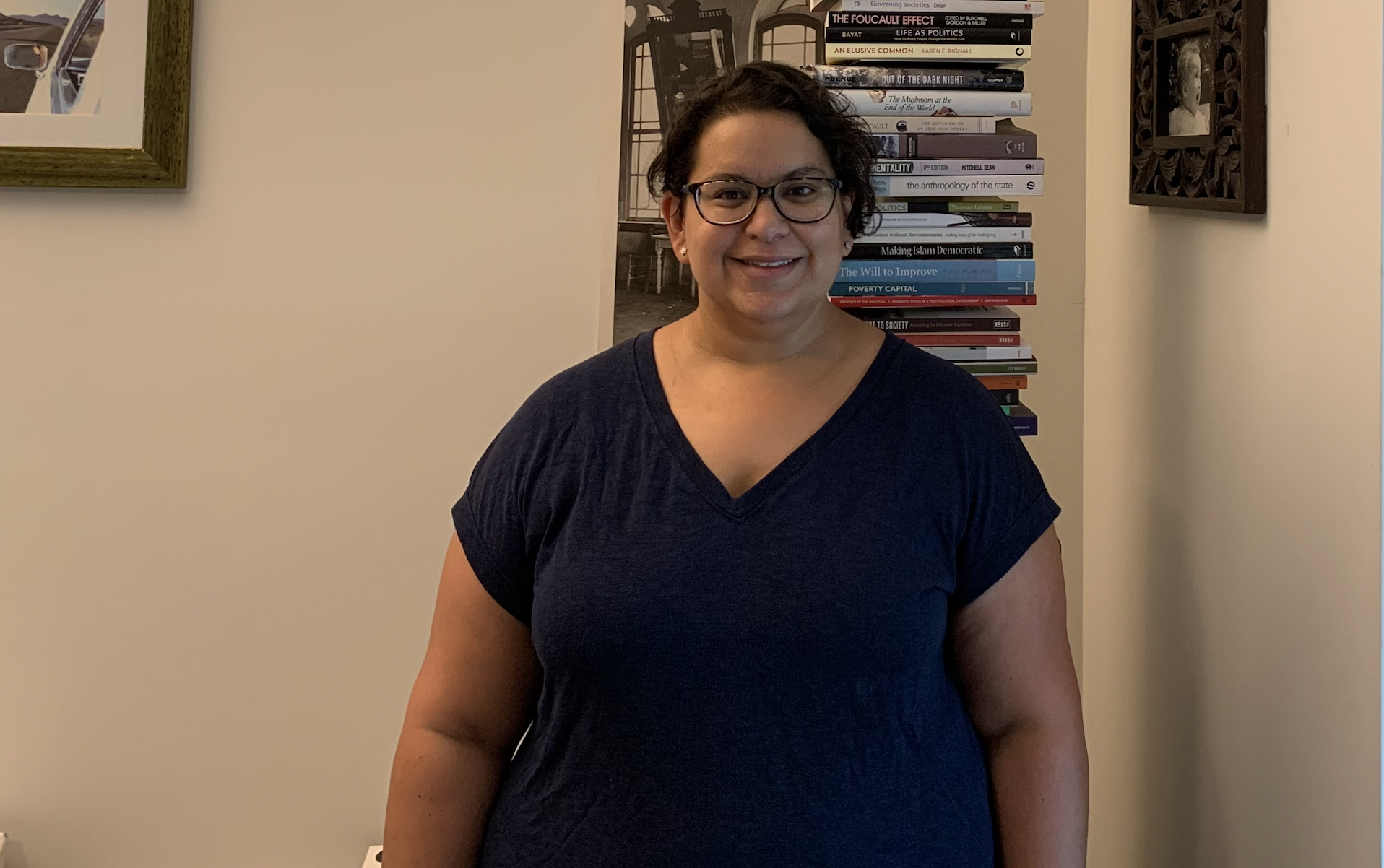By Greg Varner
Life at George Washington University’s Institute for Middle East Studies (IMES) was sweetened recently by the awarding of federal grants from the United States Department of Education Title VI programs, pledging the institute a total of $2.1 million over four years to support public outreach and student fellowships.
Housed in the Elliott School of International Affairs, IMES was founded in 2007 to support research and teaching on the Middle East. It brings together faculty and graduate students from disciplines across campus, including political science, history, anthropology, religion and international business.
“Being recognized as a leader in Middle East studies is a big accomplishment for the institute and a testament to the quality of our program’s faculty, our offerings and our students,” said Mona Atia, associate professor of geography and international affairs and IMES director. “Students from all different schools at our university, not just the Elliott School, benefit from these awards.”
The District of Columbia’s delegate to the U.S. House of Representatives, Eleanor Holmes Norton, sent a letter in early August to congratulate Atia on the two awards, one designating IMES as a National Resource Center (NRC) and the other endowing Foreign Language and Area Studies (FLAS) fellowships for students studying the Middle East at GW.
FLAS fellowships enable students to pursue area studies courses and to learn modern Middle Eastern languages. During the academic year the grant provides funding for six graduate fellows, who receive a full fellowship for 20 credits a year plus a living stipend. In summer, eight additional awards are provided for graduate and undergraduate students to engage in intensive regional language study overseas or at US institutions.
The NRC grant will enable IMES to increase language offerings in modern Middle East languages and to develop a massive open online course (MOOC) in Beginning Kurdish that will be free and available to the general public.
“The NRC grant enhances the institute’s outreach portfolio and our ability to engage with K-14 educators and the public,” Atia said, “and there’s a partnership with minority-serving institutions to improve Middle East studies at their institutions.”
A majority of resources in the institute’s outreach portfolio go to two thematic programs. The first, in partnership with Howard University, is called Imaginary Divides and will rethink the boundaries between North Africa, Sub-Saharan Africa and the Middle East.
“We’re planning a series of programs and conferences, a lecture series, book development workshops and course development workshops for minority-serving institutions such as Morgan State University,” Atia said. “It will enable faculty to offer new courses and, at Northern Virginia Community College, to produce Arabic-language curriculum.”
The other program, in partnership with the National Council for Geographic Education, is called Knowing the World. Its emphasis will be on teacher education, pedagogy and training, primarily aimed at middle- and high-school educators teaching about the Middle East in their classrooms. Workshops and webinars will help teachers introduce new content relating to the Middle East; multimedia materials relating to the region will also be created, designed to educate a broader audience and highlight the research being done by faculty, with some contributions from GW students.
The FLAS and NRC grants are awarded on a competitive basis. There are 98 institutions across the United States that have been designated as NRCs, of which 11 are devoted to the study of the Middle East, Atia said. Nationally, 112 FLAS awards have been given to US colleges and universities to award fellowships in the languages of various world regions.
“I’ve worked hard to build up our outreach portfolio,” Atia said. “We worked tirelessly to put forward a programmatic agenda making Middle East studies more accessible to a broader audience, including minorities. That’s a big focus of our work. We hope that through this programming we’re able to expand the public’s understanding of a misunderstood region.”



